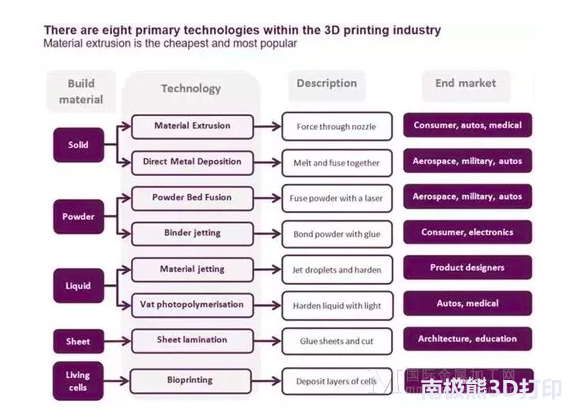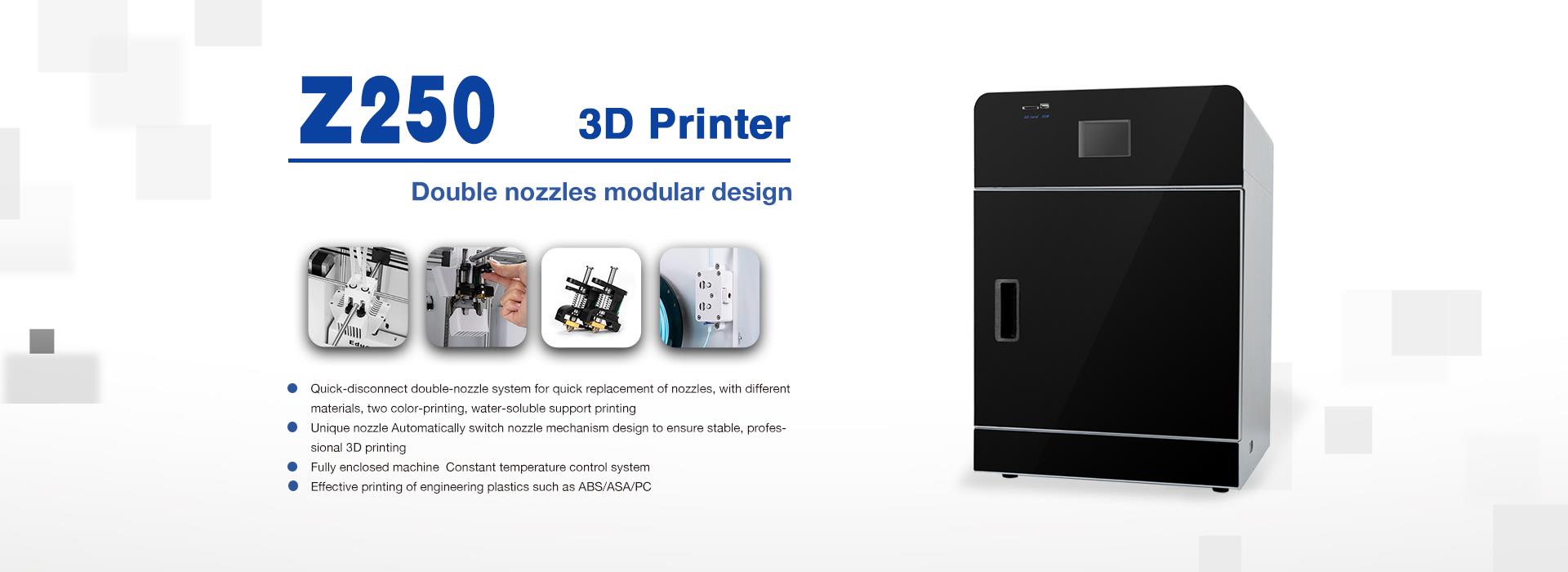3D printing or additive manufacturing is the process of printing 3D model data layer by layer into a material. This is in contrast to traditional subtractive manufacturing techniques - the traditional subtractive manufacturing technique that selectively removes material. Because of its advantages, the technology of 3D printers has gradually become a game changer in the industry.
Most additive manufacturing systems use digital blueprints created by 3D Computer Aided Design (CAD) software. Additive manufacturing can produce complex shapes and structures that are difficult to fabricate using conventional processing methods.
There are eight major additive manufacturing techniques, each using a different material, from plastic to metal alloy. Material extrusion is the cheapest and most popular technology, mainly using plastic as a construction material. In contrast, direct metal deposition and powder bed fusion are more expensive techniques and are primarily used to print high precision, high strength metal parts.

3D printing has not yet been used as an alternative to mass production, but it is now widely used in prototyping in many areas, significantly reducing development costs. 3D printing also has a strong advantage in the aerospace industry, which has dramatically changed the economics of one-time manufacturing of precision parts. 3D printing is currently being explored in new environments, especially in the construction and medical sectors.
How big is the 3D printing market?
In 2017, the 3D printing industry was worth $7 billion, up from $3 billion in 2013. By 2025, the global spending on the 3D printing market will exceed $20 billion.
Today, the consumer electronics and automotive industries are the largest applications for 3D printing. The most common use of 3D printers is to make parts directly. In 2017, about 30% of all 3D printers sold were used for direct printing of parts, up from 4% a decade ago, making direct parts production the fastest growing application for 3D printing. Vision aids and demonstration models are the next most common applications, accounting for 20% of total 3D printing system spending. One-fifth of 3D printers come from the consumer electronics industry, with the automotive industry accounting for less than 20%, followed by medical, aerospace and industrial applications.
3D printing is taking the lead, but the main impact is after three to five years. The industrial 3D printing market is growing steadily, albeit at a different rate than the personal or desktop system market. Therefore, the industry does not pose a direct threat to traditional manufacturing, and the changes it brings are more likely to be gradual rather than revolutionary. However, the early evidence of using 3D printing technology does show that for some industries, the "destructive power" of 3D printing is indeed huge.
Four major trends in 3D printing
1. New materials will appear one after another
The pace of research and development investment in 3D printed materials will never stop. In metal 3D printing, new alloys and compounds reduce costs and increase the efficiency of metal printing. Cemented carbide, a carbon compound, consists of fine carbide particles bonded together with a binder metal. Carbide objects developed in Germany can be jet printed using adhesives and produce objects that are both strong and durable. Other materials research is underway, including cement compounds, bioprinting, biological structures, and even in food manufacturing, from pasta to pastries... we will be able to see the growing family of materials.
2, industrial 3D printing continues to expand
The application of industrial grade 3D printers is making great strides. As HP enters the industrial printing arena, it will expand its industrial 3D printing platform in terms of form factor, hardware size and production size and size. HP's stated goal is to radically increase the speed at which custom parts can be printed, creating the true possibility that 3D printing will become a standard part of consumer electronics, mass-produced objects and high-volume engineering manufacturing processes.
3, 3D printing has become the mainstream of health care
3D printing has been used in healthcare, but it is still considered a novelty. However, in the next year or two, 3D printed implants will complete the first phase of clinical trials and become a standard part of the healthcare portfolio. In bioprinting, the printing of surrogate organs has existed for more than a decade, and many clinical trials have begun, but bioprinting products will begin to test and evaluate new pharmaceutical compounds and medical technologies.
4, giant 3D printer beyond concept verification
So far, we have seen a small number of compelling "large printers" for large applications such as engineering and construction. At this stage, most of these machines are proof of concept (POC) products. However, in the next two years, there will be a series of large-scale production of large or very large platform 3D printers.
Three major challenges of 3D printing
1, material
It's one thing to get the parts out of the printer, and 3D printing can produce very unique and complex geometries. However, we all have to admit that many 3D printed parts do not perform as well as traditionally manufactured parts. The big reason is that the material problem of material properties is at work. At present, most of the materials used in 3D printing are relatively simple, and pure polymers can only play a role in some applications, and the application is severely limited. This is the reason why the industry is looking for composite materials and composite printing technology--"composites" It will also be a major research direction in the future.
2, design
Most things are made in a very simple way if you look around the room you are in. We have been "trained" to think in a simple design - for example, we are used to starting with a large piece of material and then processing it into the desired part step by step - and this thinking is not using 3D printing. The best way. The use of new design tools to teach employees in the production department will require extensive redesign and retraining of design thinking. Generating design and topology optimization tools make the 3D printing workflow easier, but there is still a lot of progress.
3, accuracy and reliability
3D printing technology makes logistics easier. For example, if you want to use a certain part in Beijing, I just need to send the data model from Guangzhou. You can print it directly in Beijing. You don't need me to print it out in Guangzhou and send it to Beijing. Go, save trouble and save costs. The problem is that the 3D printers in Guangzhou may be slightly different from the parts printed in 3D printers in Beijing. This is a very challenging problem. For industrial machines, you can buy better components and use a closed loop system to make the manufacturing process more reliable and repeatable.
This is a very big problem for 3D printing manufacturers, because you need to make sure that every part you supply to the customer can run reliably, and this is very demanding for the fine! It is worth noting that while making traditional manufacturing more efficient, the 3D printing industry still has a lot of room for development.

